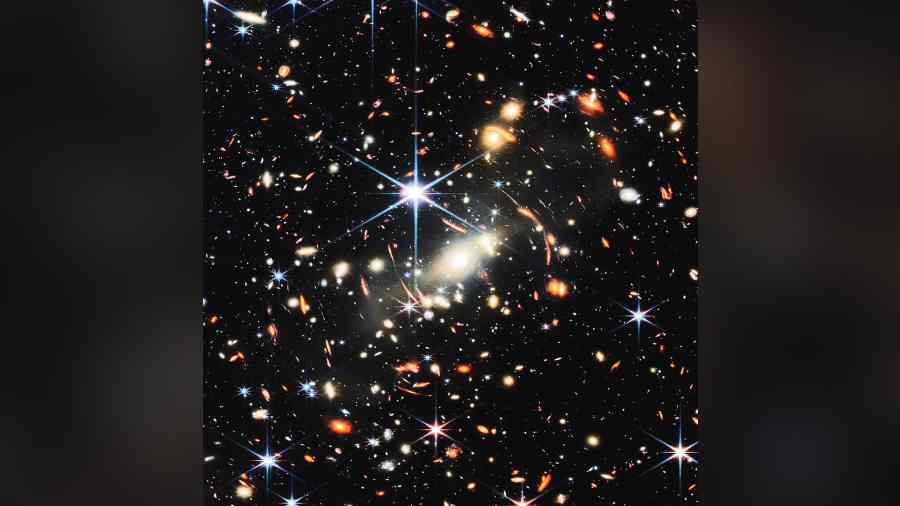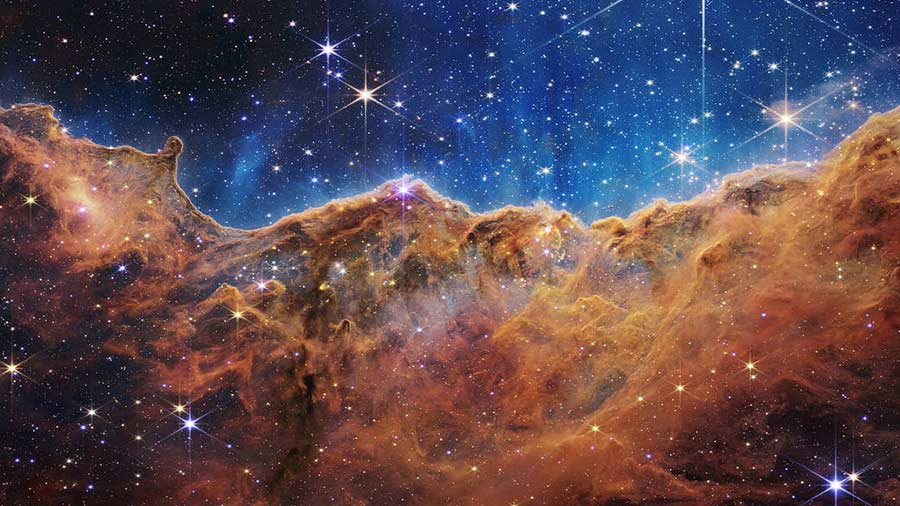For the last few weeks there was a buzz of excitement not only among the astronomical community but also the general population about the publication of the first image taken by one of the most advanced telescope systems technologically, James Webb Space Telescope (JWST).
The JWST has a 6.5-metre-diameter gold-coated beryllium primary mirror made up of 18 hexagonal mirrors, circling around a point in space, approximately 1.5 million km beyond Earth's orbit around the Sun. The American President on July 11, on behalf of NASA, unveiled this image of a galaxy cluster called SMACS 0723, known as Webb’s First Deep Field, at the White House on Monday.
This is the deepest and most clear image of a distant patch of the universe, which measures similar to the size of a grain of sand if one holds it at arm’s length. The amazing image of a deep field, taken by Webb’s Near-Infrared Camera (NIRCam), is a composite made from images at different wavelengths, totaling more than 12 hours — achieving depths at infrared wavelengths beyond the Hubble Space Telescope’s deepest fields.
The image, which has flooded the social media and multitudes of websites, shows the galaxy cluster SMACS 0723 as it appeared 4.6 billion years ago.
This has been previously observed by the Hubble Space Telescope as a part of the Southern Massive Cluster Survey (SMACS), located in a patch of sky visible from the southern hemisphere on Earth. Plank Telescope in Microwave & Infrared and Chandra telescope in X-ray have also earlier imaged this cluster.
To come to the picture, thousands of galaxies are visible in theimage, which is the highest-resolution image of the early universe ever taken.
Though there are some very bright objects as well, they are images of stars in our own Milky Way galaxy. Webb's sharp near-infrared view brought out faint structures in extremely distant galaxies, offering the most detailed view of the early universe to date. Moreover, the startling fact is that we can also see more distant than the 4.6 billion light years distant galaxy cluster.
The sharp arcs and extended features are lights emitted by more distant galaxies, born at the initial period of our universe. The combined mass of SMACS 0723 galaxy cluster acts as a gravitational lens, distorting and magnifying much more distant galaxies behind it.
The image has brought into sharp focus the tiny, faint structures that have never been seen before, including star clusters and unknown features. It marks the beginning of an era, where in the coming days researchers around the globe will soon begin to learn more about the galaxies’ masses, ages, histories and compositions, thereby giving us more complete information about the earliest structure of our universe.
The Hubble Space Telescope image of the same region is being compared with the image obtained by the James Webb Space Telescope to show the enormous improvement the JWST has achieved in resolution and clarity.
But one should not forget that science is a progression of concepts and understanding, often critically dependent on past discoveries and built upon past breakthroughs. For the last 32 years, Hubble Space Telescope has continuously unfolded the magical mysteries of the cosmos and has revealed a large number of truths about nature on its grandest scale.
This voyage of discovery has enabled today’s scientific community to strive forward and reach out further with JWST. One surely realises the future will be very exciting both visually and from the aspect of a better understanding of the universe and the objects in it.
Time will tell us how the information beamed from the James Webb Space Telescope will change our concepts and ideas of the Cosmos.
Debiprosad Duari, director, Institute of Astronomy Space and Earth Science (IASES), Kolkata


